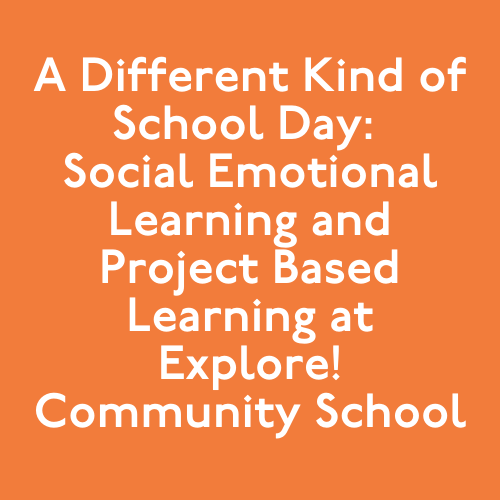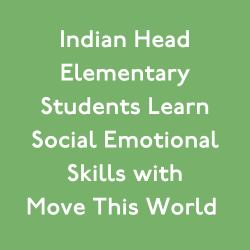A Different Kind of School Day
Afternoons at Explore! Community School might look a little different than your standard elementary school classroom. Not only do students have dedicated time to “Fitness and Adventure” but they also engage in an hour of purposeful project-based learning, called “Explorations” every day. This is an opportunity for them to take the knowledge they have gained and apply it authentically through hands-on activities that require strong critical thinking, creativity and communication skills. Students integrate academic concepts, art, music, technology and community service throughout their Explorations and after a rigorous cycle of feedback, students present their work during an exhibition. The kindergarten classes just completed their “exhibition of learning,” which was a time to publicly celebrate their learning.
Explore! Community School was founded in Nashville, Tennessee, just over two years ago in 2015. From the beginning, social emotional learning has been embedded in their school culture and curriculum. When Explore! opened their doors back in 2015, they already knew that social emotional learning would be important for their students to be successful, especially in terms of self-regulation and self-expression. It was crucial that students be able to express themselves in healthy ways since a large portion of their school day includes project based learning and collaboration.
Creating SEL Buy In
Explore! started by using Responsive Classroom, which helped teachers begin to structure their day to include morning meetings, closing circles, clear rules, and time for students to take “brain breaks.” Initially, teachers were expected to implement Responsive Classroom principles and were encouraged to integrate SEL lessons into their academic curriculums. However, without clear guidance and resources, this was proving to be difficult. Principal, Jon Driskell, realized that this integration wasn’t happening at the level and frequency they wanted and that the students needed. It was at this time that Driskell reached out to other schools in the area to discover how they were tackling social emotional learning and first learned about Move This World.
Driskell knew that before implementing any new program, he needed and wanted the teachers’ support.
“Teachers need to have a voice. They have the wisdom, knowledge, and experience to know what is and isn’t going to work in their classrooms.”
He left the decision of what program to use up to the teachers. The second grade team found that Move This World was “easy to use and applicable to their students.” They decided to give it a try.
The Impact
Teachers and administrators have noticed an increase in SEL strategies being used by students on a daily basis. Students are better able to express their feelings, resolve conflicts and communicate with one another effectively. The number of disruptive incidents have steadily declined over time. The SEL initiatives put into place at Explore! have also positively impacted school culture, in terms of student-to-student relationships, student-to-staff relationships and staff-to-staff relationships.
Driskell plans to continue to integrate multiple social emotional learning initiatives at Explore! Outside of Move This World and Responsive Classroom they’ve also implemented mindfulness practices and teacher wellbeing initiatives. The school has found mindfulness practices to be particularly useful after lunchtime and had a professional come in to teach staff about the “Mindful School” curriculum. Teacher wellbeing is typically addressed through professional development sessions which include team building and time to connect and have fun.
Driskell advises other administrators to be proactive and plan for new programs before the school year starts. Implementation often goes more smoothly when there is time for teacher training and PD over the summer. He also knows he must be mindful of the teacher’s time – programs should not be time intensive and should be easily sustainable. Moving forward, Driskell hopes to see more of a “Response to Intervention” approach to behavior and SEL in addition to academics. Individual students need varying levels of support when it comes to developing social and emotional wellness, just as they do within the standard academic content areas. Similarly, teachers need support in implementing social emotional learning and prioritizing their own wellbeing.
Sign up for Move This World’s newsletter to stay up to date on social emotional learning.
Enter your email below!










